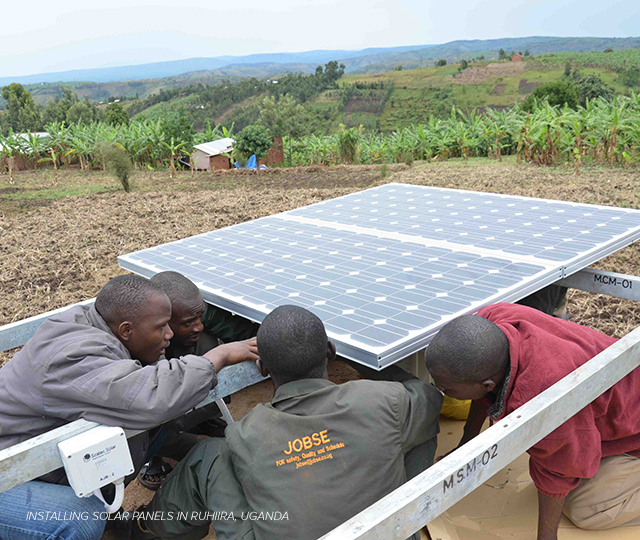Step 4: Identify Energy Technologies
ACTION STEPS:
- Select electrification technologies
IN RUHIIRA:
Our approach to energy planning is unique in that, while most electricity planning efforts focus on a single energy technology, our method goes beyond grid electrification to include renewables and diesel energy where appropriate. We feel this is a practical approach that deals with the realities of limited resources and rural populations.
We met with local utilities to determine the energy capabilities of the area. The electrification options we looked at were:
- Grid extension with medium-voltage wire.
- Mini-grids with a local distribution grid and a small centralized generation facility. Diesel was the default generation in most of these cases, but we considered alternative local resources when economical such as hydro or hybrid configurations.
- Off-grid solar systems. These made sense for extremely remote buildings where aggregate demand of households and facilities did not justify the above two solutions.
TIP: Work with local stakeholders to determine the costs of different energy options. It is important to work with local stakeholders because the costs of each energy type varies greatly from area to area. The key is including all costs of transporting infrastructure to where it is needed and of local installation. Each country and even sub-regions experience nuances that affect distribution, procurement and construction costs. For example, in Liberia, we see practitioners face an installed wire cost of $45/m while nearby Ghana enjoys a cost of $25/m, like Ruhiira.
